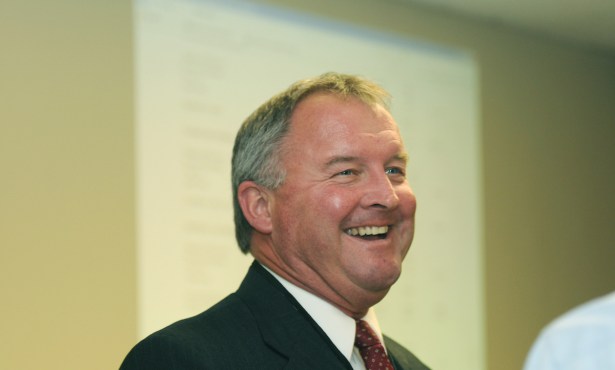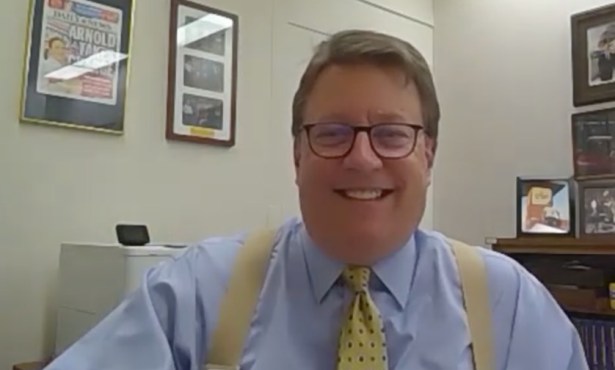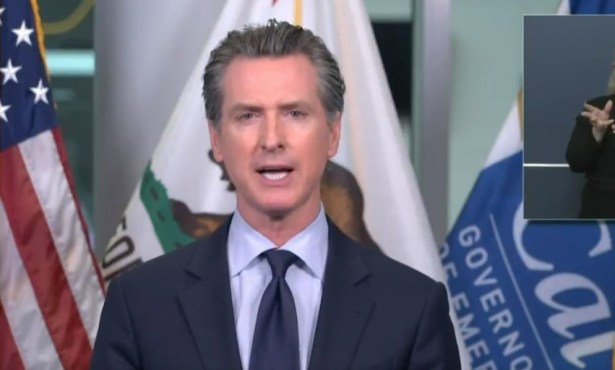It’s Complicated
Higher-than-Forecast Tax Revenues Make Brown's Budget Sell More Difficult
For Jerry Brown, the good news is that California’s tax collections last month came in several billion dollars higher than expected.
The bad news for the governor: Tax collections last month were billions higher than expected.
A new report by the Legislature’s budget office, which showed state income tax receipts for April $2.5 billion more than had been forecast, threw a new and unexpected obstacle in front of Brown’s financial game plan. Gleeful Republicans, who have staunchly opposed the governor’s bid to call a special election over his plan for $12 billion in higher tax rates, were quick to claim the $2.5 billion of the report proved the wisdom of their stance.

“California is not in this position because we’re taxed too little,” State Senator Tony Strickland, whose 19th District includes Santa Barbara, told reporters. “We’re in this position because we’re taxed too much.”
As a policy matter, the sudden revenue spike may signal the start of a solid economic recovery in California, despite ongoing high unemployment. Projected over a full year, the higher tax collections could put a serious dent in a currently projected $15-billion deficit for the fiscal year that begins July 1. As a political matter, the new numbers put Brown into a defensive posture, forced to argue that higher taxes are still needed for at least five years to cure chronic deficits and avoid the annual smoke-and-mirrors budget-fix farce that has become routine in Sacramento.
The Democratic governor, who’s been out of public view for several weeks after surgery to remove a cancerous growth from his nose, made the unusual move of having a surrogate respond to the GOP’s pushback on his tax plan.
“While tax receipts are currently running higher than projections, this should in no way be taken to mean that we can ease up on our efforts to close the remaining budget gap,” said Ana Matosantos, Brown’s finance director. She noted that increased case loads and legal requirements on spending levels for health and welfare programs could blunt the impact of the extra $2.5 billion: “Changes in our cash receipts aren’t the only issue that drives the size of our budget gap.”
As a practical matter, none of this mattered much to educators and social services advocates — unhappy about $12 billion in cuts already made by lawmakers and the governor — who have grown increasingly aggressive in demanding higher taxes on corporations and the wealthy.
The powerful California Teachers Association organized a “State of Emergency” protest at the Capitol, which drew large crowds and resulted in the arrest of 65 people who staged a sit-in on the first day of the weeklong demonstration — the first such mass arrests since a similar incident during Brown’s last turn as governor in the 1970s.
As protestors chanted “Tax, tax, tax the rich, we can solve the deficit,” Betty Olson-Jones, a teachers’ union leader from Oakland, told the crowd: “We’re not just here to lobby — we’re here to raise some hell.”
“These cuts run deep, and they not only impact the present; they impact our future,” CTA President David Sanchez said in a speech at the beginning of the rally. “We are here today and we will be here the entire week to tell our legislators they must extend the temporary taxes.”
But with Republicans digging in deeper on their no-higher-taxes position, and most Democrats already committed to Brown’s plan, the protests seemed much more an exercise in political theater than in persuasion, as all the players await the next development — next week’s so-called “May revise,” the governor’s annual update of California’s complex budget calculus.
FUN WITH NUMBERS: Along with its dreary budget duties, the Department of Finance has been churning out a series of interesting reports about California’s changing demographics, based on the 2010 Census, that have significant public-policy implications.
The state’s population increased 10 percent during the last decade, to 37,253,956, but Santa Barbara County grew only 6.1 percent, to 423,895 people.
Most of the county’s population increase came in Santa Maria, which grew to 99,553 people, making it the 69th largest city in the state, compared to 82nd 10 years ago; by contrast, the City of Santa Barbara lost 1.3 percent in population, giving it 88,410 residents and dropping it to the 83rd largest city in California, compared to 67th a decade ago.
Nearly all the population growth has been among Latinos; whites are now a minority in Santa Barbara County, about 48 percent of the population, while nonwhite Hispanics represent 43 percent.
You can find all the Department of Finance census reports online through the following link: tinyurl.com/dofcensus2010.



